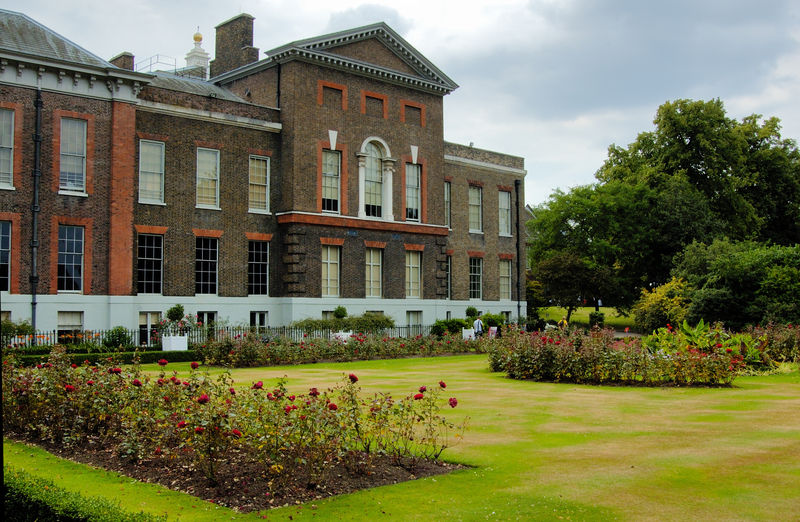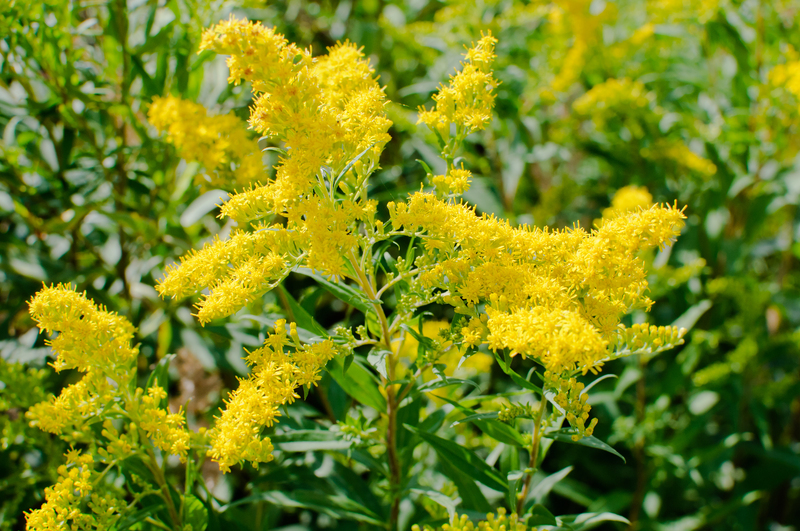Exploring the World of Gardening in Pots and Containers
Posted on 08/09/2025
Exploring the World of Gardening in Pots and Containers
Gardening in pots and containers has rapidly gained popularity as an accessible, versatile, and rewarding form of horticulture. Whether you have a sprawling backyard, a cozy balcony, or a small windowsill, growing plants in pots and containers allows everyone to connect with nature and create vibrant green spaces. This comprehensive guide delves into the exciting world of container gardening, highlighting its benefits, creative ideas, practical tips, and everything you need to cultivate a thriving potted paradise.
Why Choose Pot and Container Gardening?
Container gardening offers unmatched flexibility for plant lovers of all levels. Here are some of the standout advantages:
- Space Savings: Ideal for urban dwellers or those with limited outdoor space.
- Control: Easily customize soil, water, and sun exposure for each plant.
- Accessibility: Suitable for people with mobility issues--no need to crouch or kneel.
- Mobility: Move containers to adjust for weather or aesthetic preference.
- Pest Management: Fewer weeds and easier pest control compared to traditional garden beds.
- Design Flexibility: Experiment with color, height, and arrangement to create dynamic displays.

Choosing the Right Pots and Containers
Types of Pots for Container Gardening
Selecting containers is the foundation of successful gardening in pots. There are numerous options, each with its unique features:
- Terracotta Pots: Classic, breathable clay pots that regulate moisture but can dry out quickly.
- Ceramic Containers: Glazed for style; perfect for decorative arrangements but typically heavier.
- Plastic Pots: Lightweight, affordable, and retain moisture longer--great for busy gardeners.
- Wooden Planters: Sustainable and stylish, but susceptible to rot if not treated properly.
- Metal Containers: Sleek and modern but can heat up swiftly in full sun.
- Fabric Grow Bags: Innovative and breathable, encouraging healthy root development.
Selecting the Right Container Size
Size matters in container gardening. Small containers dry out faster and restrict root growth, while oversized pots may hold excessive moisture. Generally, choose containers with a depth and width suitable for your plant's mature size.
- Herbs and Annuals: 6-10 inches deep
- Vegetables: 12-18 inches deep
- Small Trees or Shrubs: 18-24 inches or more
Always ensure containers have adequate drainage holes to prevent waterlogging and root rot.
What Can You Grow in Pots and Containers?
Container gardening is surprisingly versatile. Virtually any plant can be grown in a pot, given suitable space and care.
- Herbs: Basil, mint, parsley, chives, rosemary, and more.
- Vegetables: Tomatoes, peppers, lettuce, spinach, carrots, radish, and bush beans.
- Flowers: Petunias, pansies, geraniums, marigolds, and nasturtiums.
- Fruit: Strawberries, blueberries, dwarf citrus, and fig trees.
- Ornamental Grasses: Fountain grass, blue fescue and Japanese forest grass.
- Indoor Plants: Ferns, succulents, orchids, snake plant, and peace lily.
- Climbers: Morning glory, sweet peas, or dwarf clematis in supported containers.
The possibilities of growing in pots are endless!
Choosing the Best Soil Mix for Potted Plants
The right soil is vital for healthy plants in container gardening. Unlike ground soil, you'll need a special mix that provides nutrients, drainage, and aeration.
- Potting Mix: The best choice, usually containing peat moss/coco coir, vermiculite/perlite, and compost.
- Avoid Garden Dirt: Outdoor soil can compact, drain poorly, and introduce pests to your potted garden.
- Specialized Mixes: Succulents, orchids, and acid-loving plants may require dedicated blends for optimal growth.
Tip: Add slow-release fertilizer and organic compost to boost nutrients throughout the growing season.
Smart Watering Techniques for Container Gardens
Watering potted plants differs from garden beds. Containers dry out more quickly and may require daily attention, especially in hot weather. To keep your container garden thriving:
- Check soil moisture daily by inserting a finger an inch deep--water when it feels dry.
- Water early in the morning or late afternoon to reduce evaporation.
- Soak soil until excess water flows from the drainage holes.
- Try self-watering pots or add mulch to retain moisture and reduce watering frequency.
Common Watering Mistakes
- Letting soil dry out completely between waterings for sensitive plants.
- Leaving containers standing in excess water, which causes root rot.
- Overhead watering, which can encourage disease--water at soil level instead.
Fertilizing Tips for Pot and Container Plants
Plants in pots use up nutrients faster than those in the ground. For robust growth:
- Use balanced, slow-release fertilizers at planting time.
- Supplement with liquid feed during the growing season for heavy-feeders like tomatoes or petunias.
- Follow package instructions carefully--over-fertilizing can damage roots.
Creative Design Ideas for Container Gardens
Arranging Pots for Maximum Impact
One of the joys of gardening in containers is designing beautiful, personalized displays.
- Group pots of varying heights and shapes for layered interest.
- Use bold, colorful pots as design focal points.
- Cluster plants with matching needs (sun, water, soil) for easier care.
- Place tall plants in the center or back, cascading varieties along the edges.
Companion Planting in Containers
Combining compatible plants not only saves space but can help with pest control and maximize yield.
- Basil and tomatoes thrive together and improve each other's flavor.
- Marigolds deter aphids and attract pollinators; great alongside veggies.
- Herbs like chives and parsley fill in gaps and beautify pots.
Seasonal Strategies for Pot and Container Gardening
Spring:
- Start seedlings indoors or in protected spots.
- Rejuvenate last year's soil with compost and fresh fertilizer.
- Plant cool-weather crops such as lettuce, spinach, and pansies.
Summer:
- Water containers regularly; mulch surface to reduce evaporation.
- Switch to heat-loving annuals, vegetables, and herbs.
- Feed every 2-3 weeks with liquid fertilizer.
Autumn:
- Replace tired blooms with fall favorites--mums, ornamental cabbage, or asters.
- Plant bulbs for spring interest.
- Begin to reduce watering needs as temperatures drop.
Winter:
- Move tender plants indoors or to sheltered areas.
- Use cold-hardy evergreens, heathers, or decorative branches for winter color.
- Insulate pots with bubble wrap or burlap to protect roots against freezing.
Pests and Problems in Container Gardening
While growing in pots and containers reduces some traditional garden challenges, gardeners should still monitor for:
- Aphids, spider mites, and whitefly--use organic sprays or wash plants with soapy water.
- Fungal issues--ensure good air circulation and avoid overhead watering.
- Root rot--check that drainage holes remain clear; consider elevating pots.
- Nutrient deficiencies--supplement with appropriate fertilizers if leaves turn yellow or growth slows.
Environmental Sustainability in Container Gardening
- Reuse and upcycle old containers from household items; buckets, crates, or tea tins.
- Opt for peat-free composts and sustainable soil mixes.
- Collect rainwater for eco-friendly irrigation.
- Choose native and pollinator-friendly plants to benefit local wildlife.
Gardening in Pots Indoors: Urban and Apartment Solutions
Indoor gardening in containers is a lifeline for urbanites. Consider these space-saving tips:
- Use vertical shelves, hanging baskets, and windowsill planters.
- Choose easy-care houseplants for low-light apartments--snake plant, pothos, or ZZ plant.
- Herbs like basil and mint thrive on sunny kitchen windowsills.
- Self-watering or hydroponic containers can simplify care for beginners.

Frequently Asked Questions about Pots and Container Gardening
Q: What is the best way to start with container gardening?
A: Begin with easy plants such as herbs or annual flowers. Use a good potting mix, ensure your pots have drainage holes, and start with the right size container for your chosen plant.
Q: How do I prevent soil from drying out too quickly?
A: Mulch the surface, choose larger containers, and water regularly. Self-watering pots are also helpful for busy schedules or hot climates.
Q: Can I reuse soil from last year's containers?
A: Yes, with some preparation. Remove old roots and debris, refresh with new compost, and supplement with slow-release fertilizer before planting.
Q: How often should I repot my plants?
A: Most plants benefit from repotting every 1-2 years, or when you notice roots circling or pushing through drainage holes.
Conclusion: Embrace the Joy of Gardening in Pots and Containers
Container gardening is an inviting, creative, and practical way to grow flowers, vegetables, and herbs--no matter your available space or skill level. By selecting the right pots, utilizing quality soil, practicing smart watering, and designing with purpose, you'll enjoy beautiful, productive displays throughout the year.
Explore the world of gardening in pots and containers today--the possibilities are limitless, and the rewards are immediate. Whether you're growing a mini herb garden on your kitchen counter or transforming a balcony into a lush retreat, container gardening brings nature's beauty and tranquility right to your doorstep. Happy planting!

